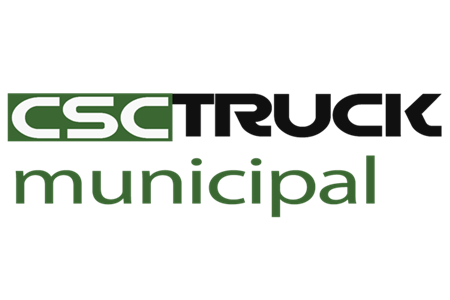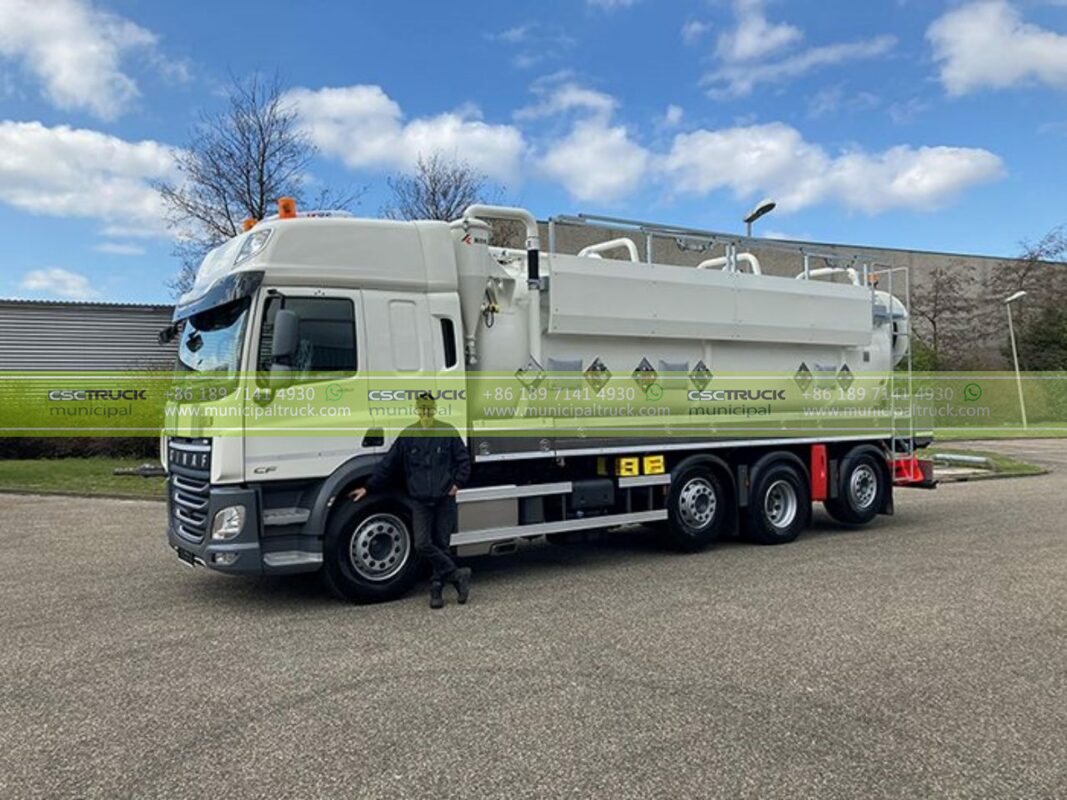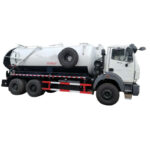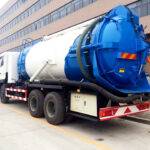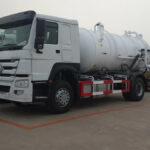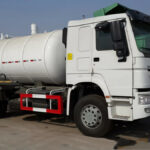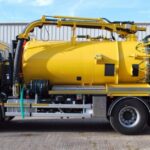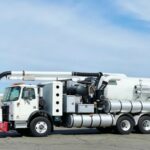Beneath the surface of our industrialized world lies a complex, often unseen challenge: the accumulation of sludge. This viscous, semi-solid residue, born from wastewater treatment plants, industrial processes, petrochemical refineries, and contaminated site remediation, represents a potent convergence of environmental hazard, logistical complexity, and regulatory scrutiny. Its composition is rarely benign; often laden with heavy metals, toxic organic compounds, pathogenic microorganisms, volatile chemicals, or corrosive elements, sludge demands handling protocols that transcend ordinary waste collection. Enter the highly specialized sludge collector truck – a marvel of engineering and procedural rigor purpose-built not merely for transport, but for the safe, efficient, and compliant management of these hazardous materials from point of generation to final disposal or treatment. These vehicles and their skilled operators function as critical linchpins in the environmental protection chain, transforming a high-risk necessity into a controlled, systematic process that safeguards public health, protects ecosystems, and upholds stringent legal frameworks governing hazardous waste.
Engineering for the Extreme: Anatomy of a Modern Sludge Collector Truck
Far removed from conventional refuse vehicles, the sludge collector truck is a fortress on wheels, meticulously designed to contain, manipulate, and transport materials that pose significant risks. Its architecture integrates robust materials, specialized systems, and multiple layers of safety to address the unique physical and chemical challenges presented by hazardous sludge:
- Heavy-Duty Chassis & Containment: Built upon reinforced, corrosion-resistant chassis capable of bearing immense weight, these trucks feature high-integrity vacuum tanks constructed from specialized steel alloys or composites resistant to chemical attack and abrasion. Critical welds undergo rigorous testing, and tank designs often incorporate baffles to minimize sloshing during transit, enhancing vehicle stability and reducing stress on the containment structure. The tank itself is the primary barrier, designed to withstand internal pressures generated during loading and potential external impacts.
- High-Power Vacuum Systems: The core technology enabling sludge extraction is an exceptionally powerful vacuum pump, typically positive displacement (PD) blowers or liquid ring vacuum pumps driven by a dedicated power take-off (PTO) or auxiliary engine. These systems generate immense suction capable of lifting dense, viscous, and often heterogeneous mixtures of solids and liquids from depths exceeding 20 feet, overcoming the non-Newtonian fluid properties that make sludge so difficult to handle. Explosion-proof components are mandatory when handling sludges containing volatile organic compounds (VOCs) or flammable solvents to eliminate ignition sources.
- Advanced Material Handling & Filtration: Transferring hazardous sludge requires specialized components. Reinforced, chemical-resistant hoses with quick-disconnect couplings ensure secure connections to source points. Intrinsically safe control systems allow operators to manage suction and discharge safely in potentially explosive atmospheres. Sophisticated filtration systems, often multi-stage (cyclonic separators followed by high-efficiency particulate air (HEPA) or carbon filters), are integrated to capture aerosols, fine particulates, and vapors generated during the vacuuming process, protecting the pump and preventing atmospheric releases of contaminants.
- Pressurized Discharge & Cleaning Mechanisms: Efficient unloading is as critical as loading. Powerful positive pressure systems (using compressed air or the vacuum pump reversed) force the sludge out through bottom or rear-mounted valves into designated reception facilities. Many units incorporate integrated tank cleaning systems using high-pressure water jets or specialized cleaning balls circulated with cleaning solutions, crucial for preventing cross-contamination between loads and ensuring the tank’s long-term integrity.
Operational Protocols: The Precision Dance of Hazardous Sludge Handling
The safe movement of hazardous sludge extends far beyond the truck’s mechanical capabilities; it is governed by a meticulously choreographed sequence of procedures, documentation, and operator expertise designed to mitigate risk at every step:
- Pre-Operation Intelligence & Planning: Every job begins with a comprehensive waste profile. Operators and dispatchers must know the exact nature of the sludge: its chemical constituents, physical properties (viscosity, density, solids content), hazards (ignitability, corrosivity, reactivity, toxicity – RCRA characteristics), and compatibility with the truck’s materials. Site-specific risk assessments evaluate access, potential spill pathways, proximity to sensitive receptors (water bodies, residential areas), and emergency response resources. Detailed manifests outlining the waste type, quantity, generator, transporter, and designated facility are prepared, aligning with EPA’s hazardous waste manifest system.
- Rigorous Loading Procedures: On-site, operators don appropriate Personal Protective Equipment (PPE) – often including chemically resistant suits, respirators (SCBA or air-purifying), gloves, and boots – dictated by the sludge’s hazard profile. Ground protection (spill berms, absorbent pads) is deployed around connection points. Hoses are securely connected, and the vacuum system engaged under controlled conditions. Operators continuously monitor suction pressure, tank levels, and filtration performance, ready to shut down instantly if anomalies occur (e.g., loss of vacuum indicating a leak, filter plugging). Real-time air monitoring for VOCs, oxygen deficiency, or toxic gases is standard practice in confined spaces or high-risk environments.
- Secure Transport & Contingency Planning: During transit, the sealed truck becomes a mobile containment unit. Drivers adhere strictly to hazardous materials transportation regulations (e.g., DOT’s 49 CFR), including placarding, proper shipping names, and approved routes avoiding densely populated areas or sensitive environments whenever possible. Continuous communication with dispatch and possession of comprehensive emergency response information (including spill control procedures and emergency contacts) are mandatory. Vehicles are equipped with spill kits containing appropriate absorbents, neutralizers, and containment tools sized for potential leaks.
- Controlled Unloading & Verification: At the receiving facility (landfill cell, thermal treatment plant, stabilization unit), the process reverses under strict supervision. Connections are verified, pressure systems engaged for discharge, and tank levels monitored to ensure complete evacuation. Manifests are signed by facility personnel, confirming receipt of the specified waste. Post-unloading, tank cleaning is performed according to protocol, with cleaning waste managed as hazardous if contaminated. Detailed trip logs documenting times, locations, personnel, and any incidents complete the auditable chain of custody.
The Imperative of Safety and Regulatory Adherence
Handling hazardous sludge is inherently high-risk, making an uncompromising commitment to safety and compliance the absolute foundation of any sludge collection operation:
- Operator Safety as Paramount: Protecting the personnel interfacing directly with hazardous materials requires a multi-faceted approach. This includes extensive initial and recurrent training covering chemical hazards, PPE usage, confined space entry, emergency response, and equipment operation. Robust medical surveillance programs monitor for potential health effects. Engineering controls on the truck itself – such as remote monitoring systems allowing operators to manage suction from a safe distance, leak detection sensors, and ergonomic design – minimize exposure risks.
- Environmental Protection: Preventing releases to soil, water, or air is non-negotiable. Secondary containment systems (drip pans, tank integrity monitoring), advanced filtration capturing fugitive emissions, and meticulous spill prevention and response plans are critical. Compliance with the Resource Conservation and Recovery Act (RCRA) and the Clean Water Act (CWA) dictates strict handling, transport, and disposal pathways to prevent contamination.
- Navigating the Regulatory Labyrinth: Sludge collection companies operate under intense regulatory scrutiny. RCRA defines hazardous waste and mandates the cradle-to-grave tracking system via manifests. The Department of Transportation (DOT) regulates the actual transport (vehicle specifications, placarding, driver training, routing). The Occupational Safety and Health Administration (OSHA) enforces worker protection standards (Hazard Communication, Respiratory Protection, Bloodborne Pathogens if applicable). State and local regulations often add further layers of complexity. Robust compliance programs, including auditing, recordkeeping, and agency liaison, are essential for operational continuity.
- Liability & Reputation Management: A single significant spill or compliance failure can result in enormous fines, criminal penalties, civil lawsuits, and irreparable reputational damage. Investing in state-of-the-art equipment, rigorous training, and proactive safety culture is not just ethically sound; it is a fundamental business imperative for survival in this high-stakes sector.
Beyond Removal: Environmental Stewardship and Sustainable Practices
While the primary mission is safe removal, the role of sludge collector trucks increasingly intersects with broader environmental goals and resource recovery paradigms, contributing to a more sustainable management model:
- Enabling Advanced Treatment & Resource Recovery: By safely transporting sludge to specialized facilities, these trucks enable technologies like anaerobic digestion (producing biogas for energy), thermal hydrolysis (enhancing digestibility), incineration with energy recovery, and advanced stabilization processes. They facilitate the movement of nutrient-rich biosolids that meet strict quality standards (Class A or Exceptional Quality) to be beneficially reused as soil amendments in agriculture or land reclamation, closing nutrient loops.
- Contaminated Land Remediation: Sludge collector trucks are indispensable in environmental remediation projects, vacuuming up contaminated sediments, lagoon sludges, or spilled materials from industrial sites, preventing further groundwater pollution or soil contamination. Their precision extraction capabilities are vital for targeted cleanup efforts.
- Preventing Public Health Crises: The timely and safe removal of hazardous sludge from wastewater treatment plants prevents system overloads and potential bypasses of untreated sewage. Removing pathogenic sludges from industrial settings or remediation sites directly mitigates risks to community health, protecting water supplies and reducing disease vectors.
- Integration into Comprehensive Waste Management Fleets: The sludge collector truck is a highly specialized component within a larger environmental services ecosystem. Its role focuses on the most challenging, high-risk semi-solid wastes. This specialization complements other critical vehicles: the sewage truck (or vacuum truck), primarily designed for liquid waste (septic tank pumping, catch basin cleaning, spill recovery of free liquids) using similar vacuum principles but often with different tank configurations and pressure ratings optimized for fluids; and standard vacuum trucks used for non-hazardous industrial liquids or stormwater. Together, these specialized assets form a comprehensive response capability, ensuring that whether the challenge is liquid effluent, viscous hazardous sludge, or routine sewage, there exists a precisely engineered vehicle and rigorously trained crew equipped to handle it safely and efficiently, protecting both human infrastructure and the natural environment from the myriad threats posed by uncontrolled waste streams. This integrated fleet approach underscores the sophistication required to manage the complex waste landscape of the modern world.
